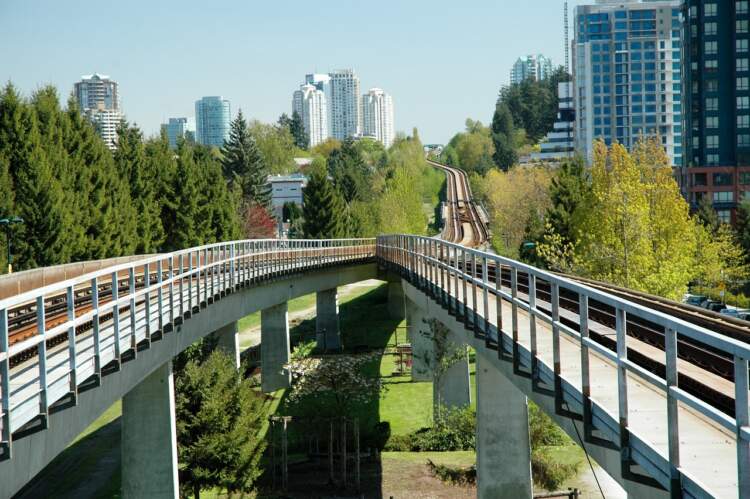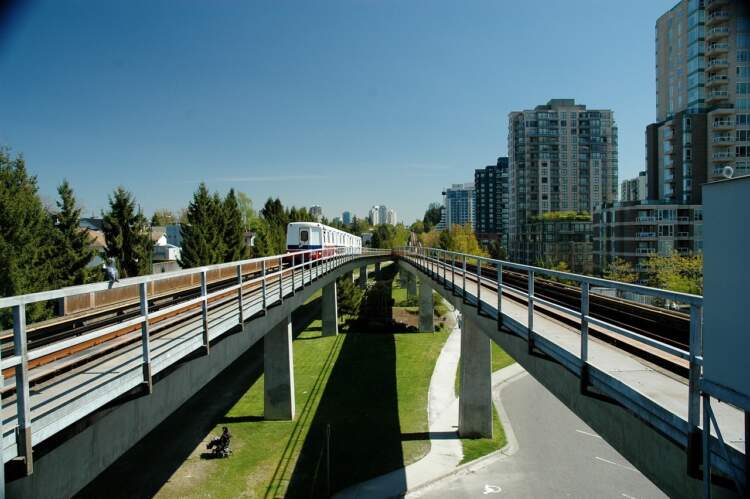
BC Government Introduces Legislation to Boost High-Rise Residential Towers Near Transit Hubs
The Government of British Columbia has unveiled groundbreaking legislation aimed at significantly increasing residential density around major transit hubs, including SkyTrain stations and bus exchanges.
Source: DailyHive, www.gov.bc.ca
This move is part of the province’s larger strategy to address housing affordability and supply challenges.

Skytrain. Source: Pixabay, onlyjf77
Key Points:
- High-Density Development: The legislation mandates high-density, transit-oriented development near major transit hubs, allowing for residential towers up to 20 storeys near SkyTrain stations and up to 12 storeys near bus exchanges.
- Government Overrides: This initiative marks a departure from traditional municipal zoning authority, with the provincial government taking a lead role in promoting transit-oriented development to enhance ridership on TransLink and BC Transit.
- Exceptional Cases: While promoting densification, the legislation outlines exceptions, excluding commercial, agricultural, and industrial land uses, as well as certain reserved lands and areas around airports.
- Building Height and Density Guidelines: Specific guidelines are provided for building heights and permissible floor area ratio (FAR) density based on proximity to transit hubs. Minimum residential building heights range from 20 storeys within 200 metres of a SkyTrain station to eight storeys between 401 and 800 metres.
- Parking Requirements: Cities are required to eliminate minimum vehicle parking requirements in these areas, allowing developers to determine parking needs based on demand, thus reducing construction costs, speeding up construction, and promoting public transit use.
- Expected Impact: The government anticipates designating approximately 100 transit-oriented development areas in 30 cities across BC within the first year, catalyzing an estimated 100,000 new homes in proximity to transit hubs over the next decade.
- Deadline for Municipal Changes: Municipalities must adapt their policies for these areas by June 30, 2024, with the option to approve higher densities and building heights at their discretion, as long as they meet provincial minimums.
- Support for Developers: Builders and non-profit developers have welcomed the changes, stating that exceeding current municipal regulations will enhance the financial viability of projects, offsetting high land costs.
- Leveraging Public Lands: The legislation aligns with the provincial government’s strategy of leveraging public lands, supporting TransLink’s real estate development division and the $400 million initiative to acquire land for transit-oriented developments.
- Comprehensive Approach: This move comes in conjunction with other recent measures, including deadlines for municipalities to allow up to six homes on a single-family lot and eliminating public hearings for rezoning applications that align with official community plans.
The legislation underscores the government’s commitment to fostering connected, livable communities and addressing the housing crisis through innovative transit-oriented development policies.
Note: The legislation details and implications may evolve, and updates will be provided accordingly.
To read more local news and updates please check our BLOG PAGE
To view Geoff Jarman’s Listings CLICK HERE
hubs

